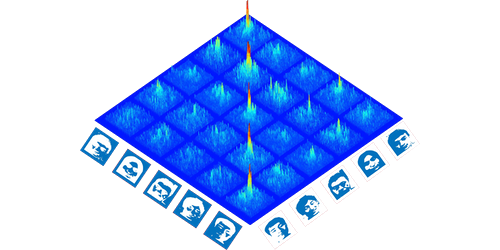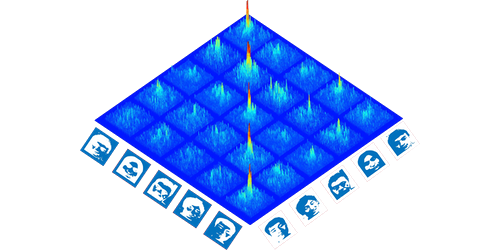Face Recognition with Ghost Imaging
Face recognition systems typically analyze a person’s photo to select out prominent facial features that are then searched for in a database of previously analyzed photos. But what if you could skip the analysis and use light to directly determine a match? That’s the idea proposed by Lixiang Chen and colleagues from Xiamen University in China, who have demonstrated a simple face recognition system based on ghost imaging. Their method finds matches by searching for correlations between two light beams imprinted with image information.
Ghost imaging uses correlations between photons to image objects with a minimal amount of illumination. The most common method involves shining a light beam into a special crystal that generates a stream of entangled pairs of photons. One photon in each pair travels towards the object, while the other photon (acting as a reference) takes an empty path. Both routes end with detectors, whose outputs are combined to produce an image of the object.
For face recognition, Chen’s team designed and tested an alternate setup that instead imprints the image of a face in the initial light beam. When this “structured” light reaches the crystal, it shares its information between the entangled photons. A spatial light modulator placed in one path acts like a mask that can be programmed with a series of test images. In a demonstration, the researchers used five face photos as their test pool and found a strong correlation peak in the combined detector signals when the selected test image was the same as the initial face image. The team says that their method could be used in low light situations, such as in a “covert operation” that must avoid detection by the target person.
This research is published in Physical Review Letters.
–Michael Schirber
Michael Schirber is a Corresponding Editor for Physics based in Lyon, France.





